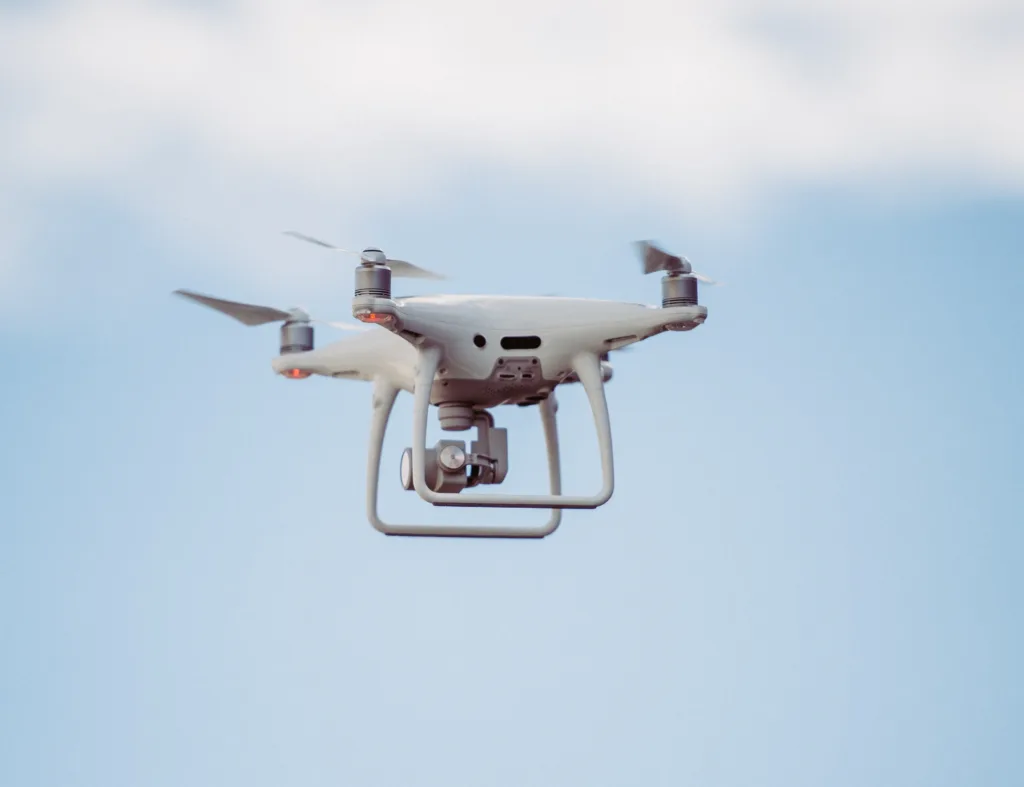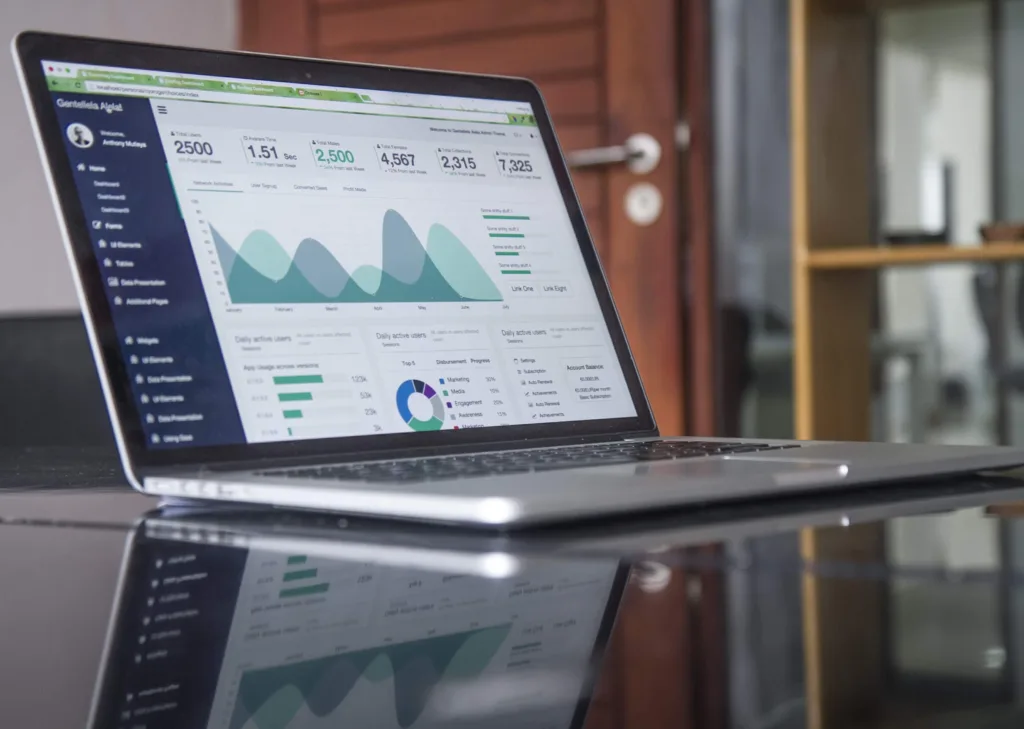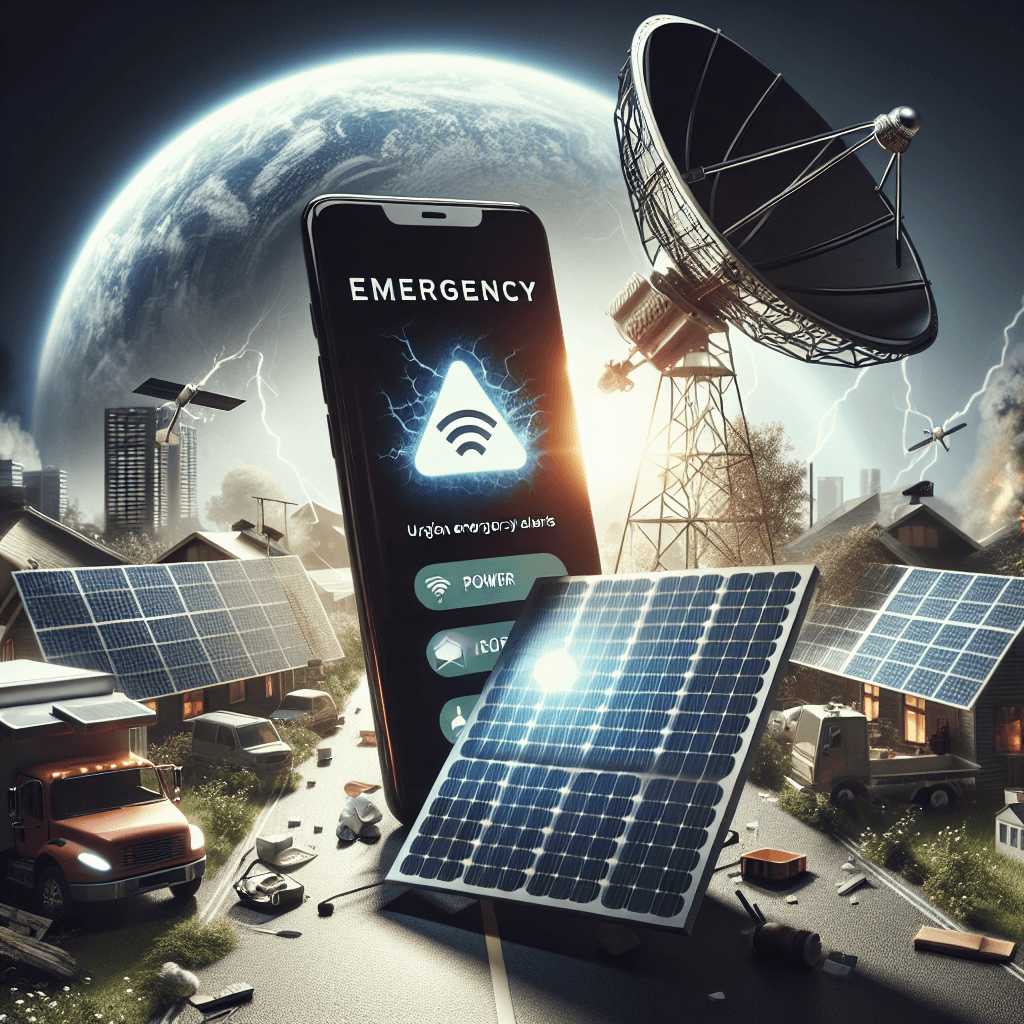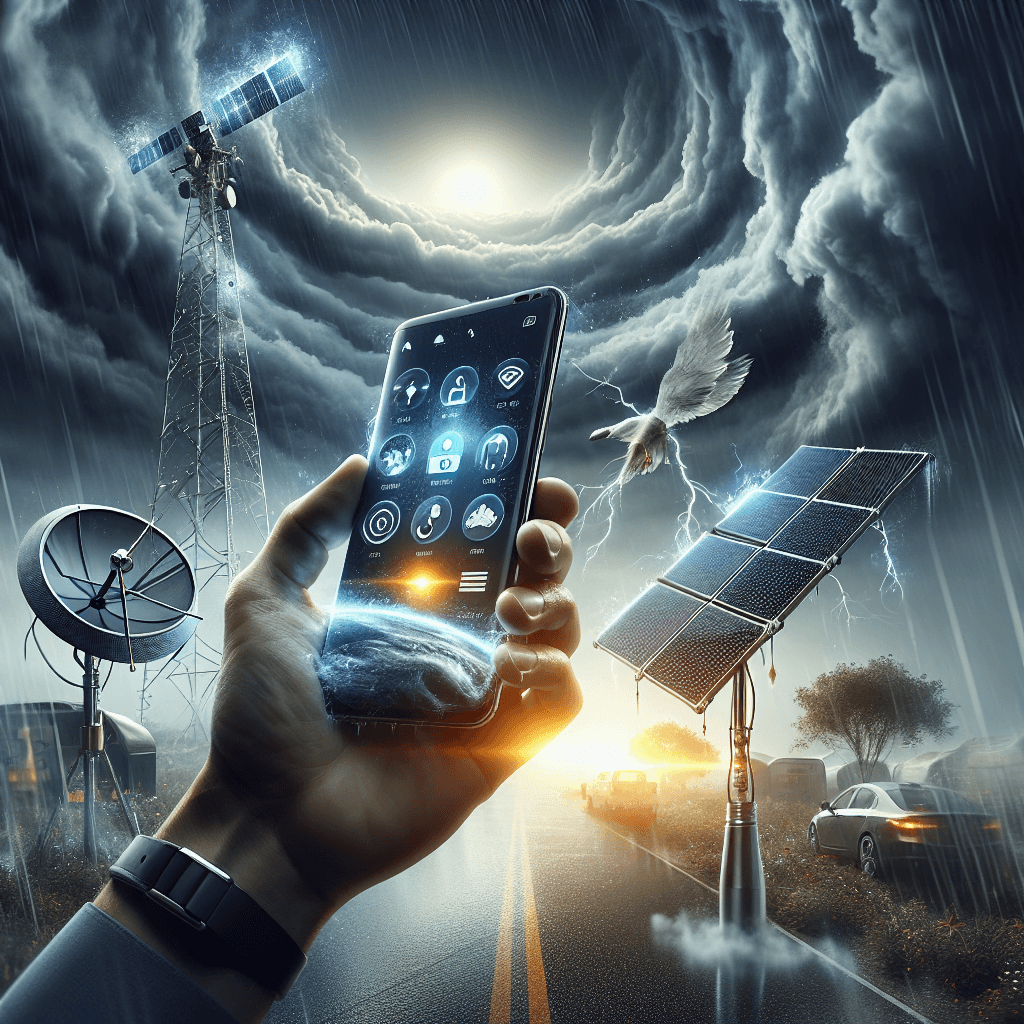In today’s age of fast-paced digital advancements, the role of technology in keeping us informed during natural disasters cannot be understated. With the increasing frequency and intensity of these events, it has become crucial to rely on various digital platforms and tools to ensure personal safety and timely information. This article explores how you can harness the power of technology to stay informed and prepared during natural disasters, empowering you to make informed decisions and safeguard yourself and your loved ones in times of crisis.

Table of Contents
Types of Natural Disasters
Hurricanes
Hurricanes are one of the most destructive natural disasters that occur in coastal regions. These powerful storms are characterized by strong winds, heavy rainfall, and storm surges, which can cause widespread flooding and destruction. staying informed about the development and path of a hurricane is crucial for ensuring your safety and taking necessary precautions.
Earthquakes
Earthquakes are sudden and violent shaking of the ground caused by the movement of tectonic plates beneath the Earth’s surface. They can result in significant damage to buildings and infrastructure, as well as pose a threat to human lives. Technology plays a vital role in monitoring and detecting earthquakes, enabling early warnings that can help individuals and communities prepare and respond to these seismic events.
Floods
Floods occur when an area becomes overwhelmed by excessive rainfall, the failure of dams or levees, or the rapid melting of snow. They can have devastating consequences, causing property damage, displacement of people, and loss of life. Staying informed about flood risks and receiving timely warnings through technology can help individuals make informed decisions about evacuations, safeguarding their homes, and minimizing risks associated with flooding.
Wildfires
Wildfires are unplanned fires that spread rapidly through vegetation, often fueled by dry weather conditions and strong winds. They can endanger lives, destroy homes and wildlife habitats, and have a severe impact on the environment. Being aware of the current wildfire situation, receiving evacuation orders, and accessing real-time updates through technology can aid in emergency preparedness and response efforts.
Tornadoes
Tornadoes are violent rotating columns of air that extend from a thunderstorm to the ground. They can cause massive destruction, including the destruction of buildings and infrastructure. Early detection and warnings are critical in tornado-prone areas, and technology plays a vital role in monitoring weather patterns and issuing alerts that can save lives and minimize damage.
Blizzards
Blizzards are severe winter storms characterized by strong winds, heavy snowfall, and low visibility. They can create hazardous conditions, disrupt transportation, and cause power outages. Staying informed about blizzard warnings, road closures, and other relevant information can help individuals and communities make necessary preparations and decisions to stay safe during these extreme weather events.
Tsunamis
Tsunamis are large ocean waves generated by undersea seismic activity, such as earthquakes or volcanic eruptions. Their immense power can devastate coastal communities, leading to loss of life and destruction of infrastructure. Technology plays a crucial role in detecting and monitoring tsunamis, providing early warnings, and enabling evacuation efforts to mitigate potential harm.
Volcanic Eruptions
Volcanic eruptions can release hot ash, gases, and lava, posing significant risks to nearby communities. Monitoring volcanic activity and receiving alerts about potential eruptions is essential for minimizing the impact on human lives and infrastructure. Technology aids in monitoring volcanic activity, tracking gas emissions, and providing timely warnings to residents living near volcanoes.
Heatwaves
Heatwaves are prolonged periods of excessively hot weather, often accompanied by high humidity. They can have adverse effects on human health, especially for vulnerable populations. Technology helps in accurately predicting and monitoring heatwaves, allowing individuals to take appropriate measures to stay safe, such as staying hydrated, avoiding outdoor activities during peak temperatures, and seeking cool shelter.
Droughts
Droughts are extended periods of below-average precipitation, resulting in water shortages and agricultural challenges. They can have severe economic and ecological impacts, affecting food production and water availability. Staying informed about drought conditions, water conservation measures, and agricultural strategies through technology can assist individuals and communities in managing the effects of drought and planning for resilience.
Importance of Staying Informed
Ensuring Safety
Staying informed about natural disasters is essential for ensuring personal safety and the safety of your loved ones. By being aware of the potential risks and receiving timely alerts, you can take necessary precautions, such as evacuating when necessary, seeking shelter, or securing your home, to minimize the impact of a natural disaster on your well-being.
Taking Necessary Precautions
Having access to information regarding the development and progression of a natural disaster empowers individuals and communities to take the necessary precautions. This may include stocking up on essential supplies, fortifying your home against potential hazards, or preparing an emergency evacuation plan. Technology provides the tools and resources needed to gather accurate and real-time information, allowing you to make informed decisions to protect yourself and your property.
Minimizing Risk
Staying informed plays a crucial role in minimizing the risks associated with natural disasters. By staying updated on the latest weather forecasts, monitoring the progression of a disaster, and heeding evacuation orders, you can reduce the chances of being caught off guard or stranded in a dangerous situation. Technology provides invaluable resources that aid in risk reduction, enabling individuals to respond effectively to changing circumstances.
Assisting Others
Staying informed also enables you to assist others who may be more vulnerable or less equipped to handle the impacts of a natural disaster. By sharing relevant information with friends, neighbors, and community organizations, you can help ensure that everyone has the necessary knowledge and resources to stay safe during these challenging times. Technology facilitates communication and information sharing, allowing for community resilience and support.
Coordinating Relief Efforts
In the aftermath of a natural disaster, staying informed helps in coordinating relief efforts and directing resources to where they are needed most. By utilizing technology tools, such as online mapping, social media, and community warning systems, disaster response organizations and volunteers can efficiently communicate, coordinate efforts, and provide assistance to affected individuals and communities.
Key Technological Tools
Emergency Alert Systems
Emergency alert systems are designed to warn individuals and communities about imminent threats, including natural disasters. These systems utilize various channels, such as text messages, phone calls, and sirens, to deliver critical information. Wireless Emergency Alerts (WEA), Emergency Alert System (EAS), and the National Oceanic and Atmospheric Administration (NOAA) Weather Radio are some examples of effective emergency alert systems in place.
Mobile Apps
Mobile apps have become incredibly useful tools for staying informed about natural disasters. They provide real-time updates, weather forecasts, evacuation routes, and emergency contact information. Official government apps, weather apps, crowdsourcing apps, and emergency communication apps are widely available to download and offer a range of features to assist individuals in preparing and responding to natural disasters.
Social Media
Social media platforms have become important channels for disseminating information during natural disasters. Platforms like Twitter, Facebook, Instagram, Nextdoor, and Reddit serve as valuable sources of real-time updates from official agencies, local authorities, and individuals impacted by the disaster. Social media allows for quick sharing of information, crowd-sourced assistance, and resource coordination during emergency situations.
Weather Trackers
Weather tracker applications provide up-to-date weather information, including radar images, severe weather alerts, and forecasts. The Weather Channel, AccuWeather, Weather Underground, and NOAA Weather App are popular weather tracker apps that deliver accurate weather updates and warnings. By utilizing these apps, individuals can stay informed about changing weather conditions and potential natural disasters in their area.
Satellite Imaging
Satellite imaging technology plays a crucial role in monitoring and tracking natural disasters. Platforms such as NASA Worldview, Google Earth, NOAA, and the European Space Agency’s Copernicus Programme provide access to high-resolution satellite images that aid in assessing the magnitude and progression of disasters like hurricanes, wildfires, and volcanic eruptions. Satellite imaging offers a comprehensive view of affected areas, enabling better decision-making and response efforts.
Online Mapping Tools
Online maps and mapping tools have become powerful resources for monitoring and responding to natural disasters. Platforms like Google Maps, OpenStreetMap, ArcGIS, and Mapbox offer interactive maps that display the locations of evacuation centers, emergency services, road closures, and other pertinent information. These tools help individuals navigate safely and emergency responders efficiently allocate resources during a natural disaster.
Radio and TV Broadcasting
Traditional media channels such as radio and TV broadcasting remain important sources of information during natural disasters. Local news stations, national weather services, and public broadcasting systems provide updates, emergency announcements, and public service announcements. Radio broadcasts can be particularly helpful during power outages or when internet connectivity is limited.
Websites and Online Forums
Websites and online forums dedicated to disaster preparedness and response offer valuable resources and forums for discussion. Websites such as FEMA (Federal Emergency Management Agency) and the National Weather Service provide authoritative information on natural disasters and emergency preparedness. Online forums allow individuals to share experiences, ask questions, and find support from fellow community members going through similar situations.
Emergency Communication Networks
Emergency communication networks, including dedicated apps and systems, play a crucial role in disseminating information during natural disasters. These networks enable authorities to send alerts, evacuation orders, and safety instructions directly to individuals’ mobile devices. They also facilitate two-way communication, allowing individuals to report emergencies and request assistance during a disaster.
Emergency Alert Systems
Wireless Emergency Alerts (WEA)
Wireless Emergency Alerts (WEA) are short emergency messages delivered to cell phones in the event of an imminent threat. These alerts are sent by government agencies and wireless carriers and provide critical information about severe weather, Amber alerts, and other emergencies. WEA messages are location-specific, ensuring that individuals receive relevant alerts based on their proximity to the impacted area.
Emergency Alert System (EAS)
The Emergency Alert System (EAS) is a national public warning system that allows authorities to quickly disseminate emergency messages across multiple media platforms. EAS messages can be broadcast on radio and TV stations, interrupting regular programming to provide essential alerts and information during natural disasters. This system ensures that individuals receive critical information even if they are not actively monitoring the news or social media.
National Oceanic and Atmospheric Administration (NOAA) Weather Radio
NOAA Weather Radio is a nationwide network of radio stations that continuously broadcast weather forecasts, severe weather alerts, and other emergency information. These radios are specifically designed to receive NOAA broadcasts, allowing individuals to stay informed about potential natural disasters even during power outages or when other communication channels are disrupted. NOAA Weather Radio provides a reliable source of real-time weather updates and emergency alerts.

Mobile Apps
Official Government Apps
Official government apps provided by federal and local agencies offer valuable resources for staying informed about natural disasters. These apps provide real-time updates, emergency contact information, evacuation routes, and preparedness checklists. Users can also receive push notifications for severe weather warnings and alerts specific to their location. Official government apps ensure that individuals have access to accurate and reliable information during times of crisis.
Weather Apps
Weather apps provide detailed forecasts, radar images, and severe weather alerts. These apps utilize advanced meteorological data and algorithms to deliver up-to-date weather information, allowing individuals to plan accordingly and monitor potential threats. Many weather apps also offer customizable alerts, allowing users to receive notifications for specific weather conditions or natural disasters in their area.
Crowdsourcing Apps
Crowdsourcing apps enable individuals to share real-time information about natural disasters, including photos, videos, and updates from the ground. These apps rely on user-generated content to provide supplemental information about ongoing events, road conditions, and assistance needs. Crowdsourcing apps promote community involvement and information sharing, fostering a sense of solidarity and supporting efficient response efforts.
Emergency Communication Apps
Emergency communication apps allow individuals to access vital information during natural disasters and communicate with emergency responders. These apps can provide updates on evacuation orders, shelter locations, emergency contact numbers, and safety instructions. Some emergency communication apps also enable users to send distress signals or report emergencies directly to authorities, streamlining the dispatching of emergency services.
Social Media
Twitter is a popular social media platform widely used during natural disasters due to its real-time nature and ability to share information quickly. Government agencies, local authorities, and emergency management organizations actively use Twitter to provide updates, safety information, and emergency instructions. Hashtags specific to a disaster or location help individuals find relevant information and connect with others affected by the same event.
Facebook plays a significant role in disseminating information during natural disasters through official government pages, local news outlets, and community groups. Users can follow and receive updates from these sources, which often share safety tips, evacuation notices, and other critical information. Facebook’s Safety Check feature allows individuals to mark themselves as safe during a disaster, providing reassurance to friends and family.
Instagram, a photo and video-sharing platform, is increasingly used during natural disasters to raise awareness and share real-time images and videos. Users can document the impact of a disaster, highlight rescue efforts, and spread important information through visually engaging content. Instagram’s location tagging features can help individuals find and share updates specific to their area.
Nextdoor
Nextdoor is a neighborhood-based social networking platform that allows individuals within a community to connect, share information, and seek assistance. During natural disasters, Nextdoor becomes a valuable tool for neighbors to coordinate support, offer help, and share updates regarding local safety, resources, and recovery efforts. Nextdoor creates a sense of community and strengthens local resilience during times of crisis.
Reddit, a popular online forum, has dedicated communities, known as subreddits, that provide information and support during natural disasters. These subreddits serve as discussion platforms where users can share updates, ask questions, and connect with others impacted by the same disaster. Reddit allows for the exchange of firsthand experiences, resources, and expert advice, creating a supportive and informative community.

Weather Trackers
The Weather Channel
The Weather Channel is a widely recognized platform that provides accurate weather forecasts, storm tracking, and severe weather alerts. The channel’s mobile app offers comprehensive features, including hourly and 10-day forecasts, interactive radar maps, and location-based alerts. The Weather Channel’s app ensures that individuals have access to up-to-date weather information and can stay informed about the potential threats posed by natural disasters.
AccuWeather
AccuWeather is a popular weather forecasting service that offers a mobile app delivering real-time weather updates and alerts. The app provides location-based weather forecasts, satellite imagery, and severe weather notifications. AccuWeather’s MinuteCast feature provides hyper-localized precipitation forecasts, allowing individuals to plan activities while considering the potential impact of natural disasters.
Weather Underground
Weather Underground is a weather forecasting service known for its network of personal weather stations and hyper-local weather data. The mobile app offers customizable alerts, storm tracking, weather radar, and crowd-sourced reports. Weather Underground’s user-contributed data enhances the accuracy and reliability of weather forecasts, giving individuals access to precise and localized information.
NOAA Weather App
The National Oceanic and Atmospheric Administration (NOAA) Weather App is an official government app that provides reliable weather forecasts and severe weather alerts. The app features radar images, interactive maps, and access to live weather radio broadcasts. NOAA Weather App ensures that individuals receive official weather updates directly from the source, allowing for timely and accurate information during natural disasters.
Satellite Imaging
NASA Worldview
NASA Worldview is an online platform that provides access to near real-time satellite imagery of Earth. The platform offers a variety of satellite data, including natural disasters such as hurricanes, wildfires, and volcanic eruptions. Users can observe the geographical extent and progression of these events, aiding in situational awareness and response planning.
Google Earth
Google Earth is a widely used virtual globe and mapping platform that offers satellite imagery, aerial photography, and 3D maps. During natural disasters, Google Earth can provide visualizations of affected areas, overlay weather data, and provide information about evacuation routes and shelters. Google Earth’s comprehensive imagery aids in understanding the magnitude and impact of a disaster, supporting informed decision-making.
NOAA
The National Oceanic and Atmospheric Administration (NOAA) offers access to a wide range of satellite images and products related to natural disasters. NOAA’s satellite imagery provides essential data for monitoring hurricanes, tornadoes, and severe weather systems in near real-time. The imagery helps meteorologists, emergency managers, and the public understand the behavior and intensity of natural disasters.
European Space Agency (ESA) Copernicus Programme
The European Space Agency’s (ESA) Copernicus Programme utilizes satellites to observe Earth’s environment and deliver data for various applications, including natural disaster monitoring. Satellite imagery and climate data provided by the Copernicus Programme assist in detecting and monitoring events such as hurricanes, floods, and wildfires. This information contributes to more accurate forecasting, early warnings, and informed decision-making.

Online Mapping Tools
Google Maps
Google Maps is a widely used online mapping service that offers real-time traffic updates, detailed maps, and satellite imagery. During natural disasters, Google Maps can provide information about evacuation routes, road closures, and nearby emergency services. The platform allows users to view disaster-affected areas, find alternative routes, and locate essential resources such as shelters, hospitals, and supply distribution centers.
OpenStreetMap
OpenStreetMap is a collaborative mapping project that provides free and open-source maps created by its community of users. During natural disasters, OpenStreetMap allows individuals to contribute real-time updates about road conditions, damaged infrastructure, and the availability of emergency services. OpenStreetMap’s collaborative nature helps create and maintain accurate disaster maps, facilitating response efforts by aid organizations and government agencies.
ArcGIS
ArcGIS is a geographic information system (GIS) software suite that offers powerful mapping and analysis tools. During natural disasters, ArcGIS enables professionals and agencies to create interactive maps with relevant information, including evacuation zones, hazard areas, and resource distribution centers. ArcGIS allows for data integration from multiple sources, providing a comprehensive and dynamic view of the disaster situation.
Mapbox
Mapbox is a mapping platform that provides developers the tools and resources to create customized maps and geospatial applications. During natural disasters, Mapbox enables the development of interactive maps that display real-time data, such as weather conditions, road closures, and shelter locations. Mapbox’s flexibility allows for the creation of visually appealing and informative maps tailored to specific disaster response and recovery needs.
Community Warning Systems
Sirens
Sirens are outdoor alert systems that emit loud tones or sounds to warn individuals of an imminent danger, such as severe weather or evacuation orders. These warning systems are typically installed in areas prone to natural disasters and can be activated remotely by local authorities or emergency management agencies. Sirens provide a broad alert to the community, signaling the need to seek shelter or take immediate action.
Public Address Systems
Public address systems are often used in public spaces, such as stadiums, arenas, and transportation hubs, to broadcast important announcements and emergency notifications. During natural disasters, public address systems can relay critical information about evacuation orders, shelter locations, and safety instructions to a large number of people simultaneously. Clear and concise messages delivered through these systems guide individuals in taking appropriate action.
Mobile Notification Systems
Mobile notification systems, such as smartphone apps or SMS alerts, provide personalized and location-specific emergency notifications during natural disasters. These systems allow authorities to send targeted alerts directly to individuals’ mobile devices, ensuring that they receive critical information even when they are on the move. Mobile notification systems enhance personal safety by delivering timely warnings, evacuation notices, and other relevant updates to the affected population.
In conclusion, technology plays a vital role in keeping individuals informed during natural disasters. Through various tools such as emergency alert systems, mobile apps, social media platforms, weather trackers, satellite imaging, online mapping tools, and community warning systems, individuals can access real-time information about the development and impact of natural disasters. Staying informed enables individuals to ensure their safety, take necessary precautions, minimize risk, assist others, and coordinate relief efforts effectively. By utilizing the available technological resources, individuals can be better prepared, respond more efficiently, and increase overall resilience in the face of natural disasters.


